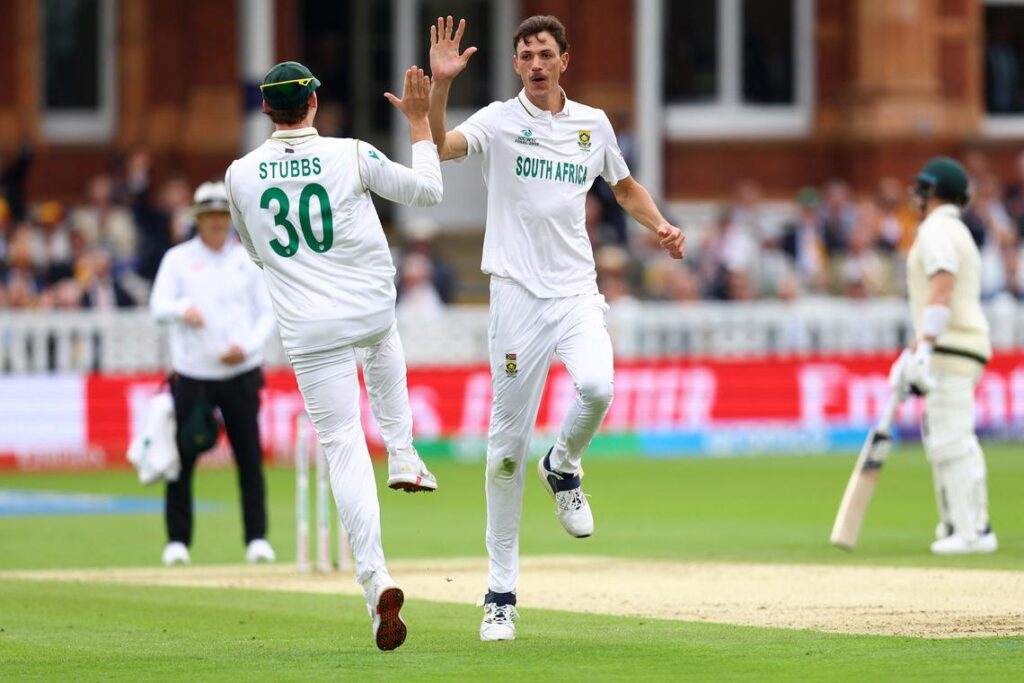Cricket’s World Test Championship final finally delivered on its promise with a thrilling first day at Lord’s. After two previous attempts were moved to the Hampshire Bowl and The Oval, this year’s final was held at the sport’s historic home, drawing over 26,000 spectators and providing a sense of legitimacy and occasion that the concept had been striving for.
Despite ongoing debates over formats and venues, the cricket itself quickly became the main focus. South Africa’s fast bowlers, particularly Kagiso Rabada and Marco Jansen, struck early after winning the toss and choosing to bowl. They tore into Australia’s top order with aggression and accuracy, reducing them to 67 for 4 by lunch.
Australia’s batting lineup had an unfamiliar look, with Marnus Labuschagne opening and Cameron Green at three. Usman Khawaja was dismissed in a familiar fashion, fending off a short ball to the keeper. Green followed in the same over, edging across his body. Labuschagne fell to an outswinger after a patient start, while Travis Head was caught down the leg side, continuing a long-standing vulnerability.
The early drama gave neutrals and English fans hope that South Africa could cause an upset. But as often happens, Steven Smith began to stabilize Australia’s innings. Despite not playing for three months, he looked composed, lining up deliveries with precision and scoring efficiently. Though he fell for 66, his innings brought some control to Australia’s day.
Beau Webster provided support but didn’t stay long enough to shift momentum completely. Still, Smith’s contribution gave Australia a total of 212, which began to look more imposing as the day progressed. By stumps, South Africa had collapsed to 43 for 4, shifting the balance firmly in Australia’s favor.
South Africa’s batting struggles were exposed against the class of Australia’s pace attack. Ryan Rickelton, Wiaan Mulder, Tristan Stubbs, and Aiden Markram all fell cheaply, unable to handle the bounce and movement. While each brings individual promise, none looked ready for this level of sustained pressure.
Heading into the second day, much will rest on Temba Bavuma and David Bedingham to rebuild and resist. If they can offer a stand similar to Smith and Webster’s, South Africa can stay in the contest and push for a result that would validate their place in the final. If not, questions about the path to qualification may resurface, even if they shouldn’t. Unbalanced Tests occur frequently, regardless of the teams involved. But this global final deserves a competitive narrative to match its ambition and that is still within reach.

